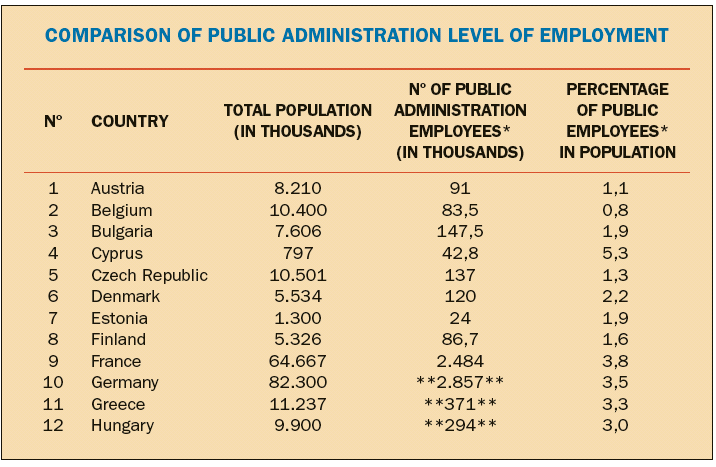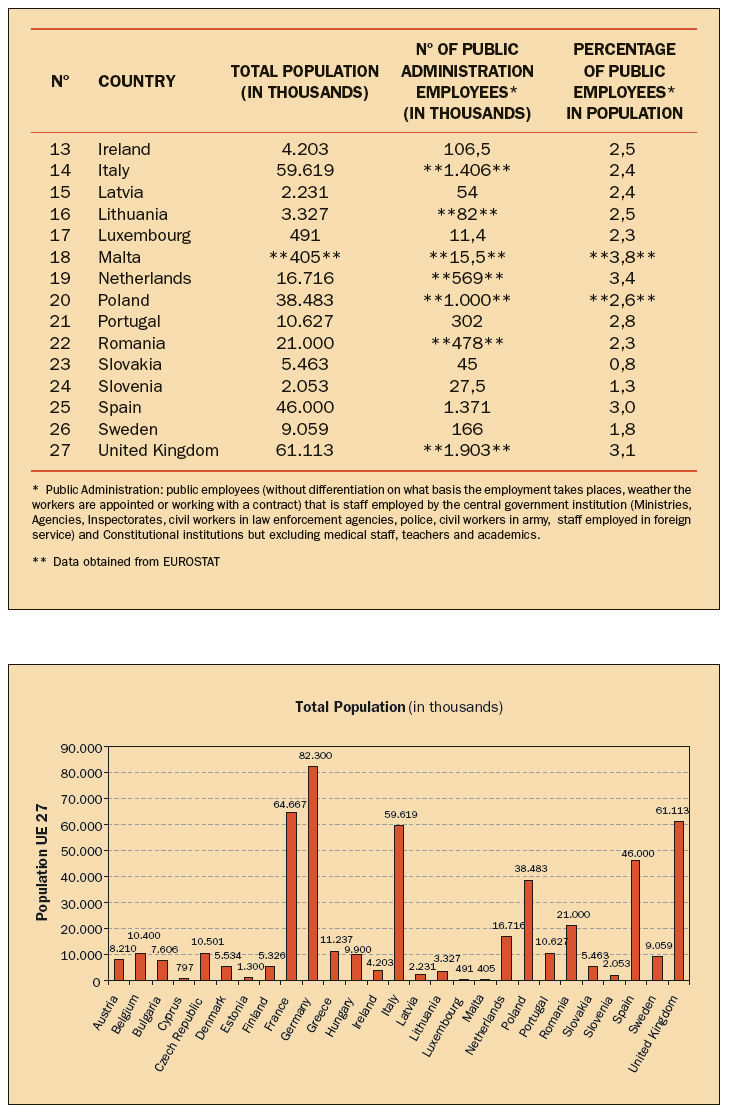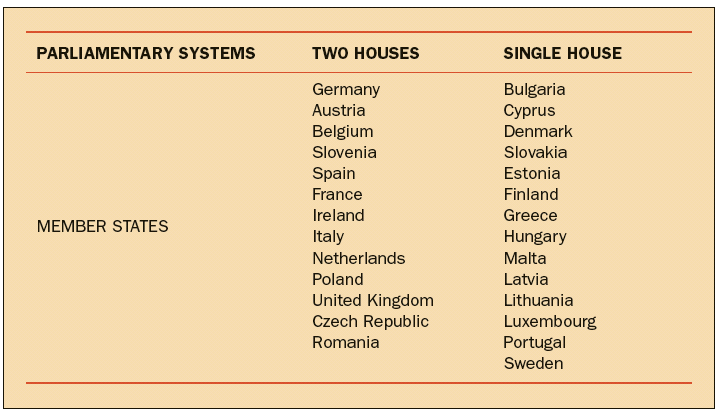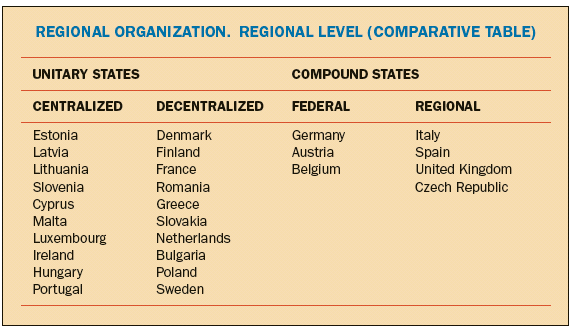Archive:Civil servants in the EU member states
- Data from Month Year, most recent data: Further Eurostat information, Main tables and Database.
The aim of this study is to provide a summary of the most important aspects of public employment within the community framework by means of a comparative analysis. This summary has been taken from the full study prepared by the aforementioned working group.
The study has been possible thanks to the cooperation of the different spokespersons in each country. However, due to time restrictions in its preparation, we must apologise for any inaccuracies or errors that may have occurred, and interested parties are requested to provide any necessary clarifications or corrections.
The study, which follows the same structure for all countries, does not intend to be exhaustive or in-depth as this is not its purpose, but instead, it provides an introduction to this type of employment within the community and may be used as a starting point for future specific studies.
Introduction
Regional and administrative organization
All executive powers in the European Union are dual, the role of Head of State may be exercised by the Monarch, (Sweden, Denmark, Netherlands, Belgium, United Kingdom, Luxembourg and Spain), or by the President of the Republic (remaining countries). Judiciary power is characterized by its homogeneity and independence compared with other powers. In all cases, legislative power lies with a Parliament that may have a single chamber or two chambers.
Local Level There are different levels of self-government and classification of local authorities, whereby the spectrum of powers varies depending on the countries. The local level plays an important role in the Nordic countries, Netherlands and United Kingdom. In any case, all EU countries have ratified the European Charter of Local Self-Government.
Public administration The administrative organization of the EU countries has evolved from an initial Bureaucratic Administration through the modernization of structures, creation of agencies, specialization of duties, on-going training, the use of new technologies and the outsourcing of services.
Civil Service Structure
Civil Servants. Current Situation.
1. Duality, in most countries between civil servants and non-civil service employees, with different legal systems and a tendency to unify the contents and working conditions of both groups.
2. Their excessive temporary nature is a widespread phenomenon in both the public and private sectors.
3. Problems in differentiating functions to be carried out by civil servants, non-civil service employees and by those recruited using trust criteria. The latter are usually temporary and are recruited to perform management or administrative management functions.
In general, the following types exist:
A. Civil Servants: This is a heterogeneous group and is made up of all those public employees linked to a Public Administration through an act of appointment and a statutory relation which is essentially regulated by Administrative Law. The civil servant condition does not necessarily mean that they work full time in public service, but it is compatible with part-time work or, where appropriate, working from home or any other forms that may be established by the corresponding laws and according to needs.
B. Non-civil service employees: Non-civil service employees serving Public Administrations and Authorities are governed by employment law but with special conditions and numbers have increased over the years. The main problem in most of the EU member states is the system to apply and uniformity of conditions in the provision of services.
C. Interim/Transitory/Temporary Staff: This type of staff fills a vacancy that is not performed by a career-based civil servant. They are recruited in all Member States on the principles of merit and ability and they are freely appointed and released. Their numbers and duties differ from country to country.
D. Management: Managers assume important responsibilities with high added value in most countries. Their regulatory system, responsibilities, working hours and remuneration level varies in the different civil service systems.
Staff management is vested in the government through ministries: Ministry for Public Administration (Slovenia), Home Office (Czech Republic) or Finance (Denmark) etc. Remuneration and budgetary powers affecting civil servants usually lies with the ministry responsible for finance.



Rights, obligations and values of public employees
In terms of principles and values for Public Employees, many States have drawn up their own ethical Codes of Conduct, either incorporated into civil service legislation or independently.
Values
Values form part of a common axiological framework within the regulatory system of each country. Although the terms value and principle have not been sufficiently defined, most countries differentiate between both categories in their legal texts.
Common values include:
1. EFFICIENCY: Efficiency is mainly identified with the exercise of public functions and almost always depends on technical skill and experience.
2. OBJECTIVITY: Most European public employment systems set out permanence, professionalism, speciality and technical preparation with legal connection in order to bring administrative action fully in line with the law and a direct relationship with public interests. One of the basic and general requirements of public administration in the EU is the necessary objectivity in the exercise of public functions.
3. TECHNICAL KNOWLEDGE, EXPERIENCE AND PROFESSIONALISM: Along with an employment relationship and the exercising of functions to ensure impartiality, those related to the use of technical know-how are subject to objectivity, including the interpretation of public interest.
4. EQUALITY, MERIT AND ABILITY: There is some disparity regarding their consideration as principles or values. However, they are considered to be essential in selection systems and job performance and appointment. There is also homogeneity in the evolution of the equality value.
Rights
General legislation on public service in each State sets out a list of rights for civil servants. They are normally basic rights that are similar for all staff, regardless of whether they are career civil servants, non-civil service employees, temporary or interim staff or management. They include the right to a career, training, paid work, paid leave and holidays, effective performance of the tasks related to their professional category, objective and transparent assessment in the exercise of their functions, respect for their privacy, sexual orientation, image and category at work, work-family life balance, the freedom of expression, etc. There are other rights that are only recognised for a single category of employees such as the right to immobility and permanence, which is mainly attributed to civil servants.
Along with individual rights, there are other group rights that are recognised in the Member States analysed. The right to unionization, free professional association, collective bargaining, strike, etc. is particularly important.
Administrative career
At work, a common framework in terms of career has been detected. As far as classification and organization is concerned, the States tend to create diverse professional groups linked to entry qualifications, on one hand, and to salary bands, on the other hand. The traditional career model is vertical, whereby an employee moves up the different categories. However, there are countries that consider the possibility of promotion without changing jobs, such as the horizontal career. Finally, the career system is starting to include performance appraisal.
Remuneration
The general remuneration system in the Member States responds principally to the following objectives: recruitment of good professionals; performance -related; retention of valuable professionals; increase in the level of staff satisfaction and quality of working life; strengthening of the public service culture, etc.
In the current models, the general pay increases are determined in accordance with the annual provisions of the state budgetary regulations. These set out maximum limits for pay rises in all Public Administrations. Pay in the public sector is generally lower than in the private sector, with a significant difference in the case of management and high level employees, and it increases as careers progress.
In turn, the pay system is closely linked to the career-based system mentioned in the previous paragraph. Therefore, in the States, part of the salary (base salary) is usually linked to the salary scale for the specific job performed by a certain public employee.
Data sources and availability
<description of data sources, survey and data availability (completeness, recency) and limitations>
Context
<context of data collection and statistical results: policy background, uses of data, …>
Further Eurostat information
Publications
- Public employment in European Union Member States - Madrid, 2010 (pdf file, 7.47 Mb)
Main tables
- Title(s) of second level folder (if any)
- Title(s) of third level folder (if any)
Database
- Title(s) of second level folder (if any)
- Title(s) of third level folder (if any)
Dedicated section
Methodology / Metadata
<link to ESMS file, methodological publications, survey manuals, etc.>
- Name of the destination ESMS metadata file (ESMS metadata file - ESMS code, e.g. bop_fats_esms)
- Title of the publication
Source data for tables, figures and maps on this page (MS Excel)
Other information
<Regulations and other legal texts, communications from the Commission, administrative notes, Policy documents, …>
- Regulation 1737/2005 of DD Month YYYY on ...
- Directive 86/2003 of DD Month YYYY on ...
- Commission Decision 86/2003 of DD Month YYYY on ...
<For other documents such as Commission Proposals or Reports, see EUR-Lex search by natural number>
<For linking to database table, otherwise remove: {{{title}}} ({{{code}}})>


